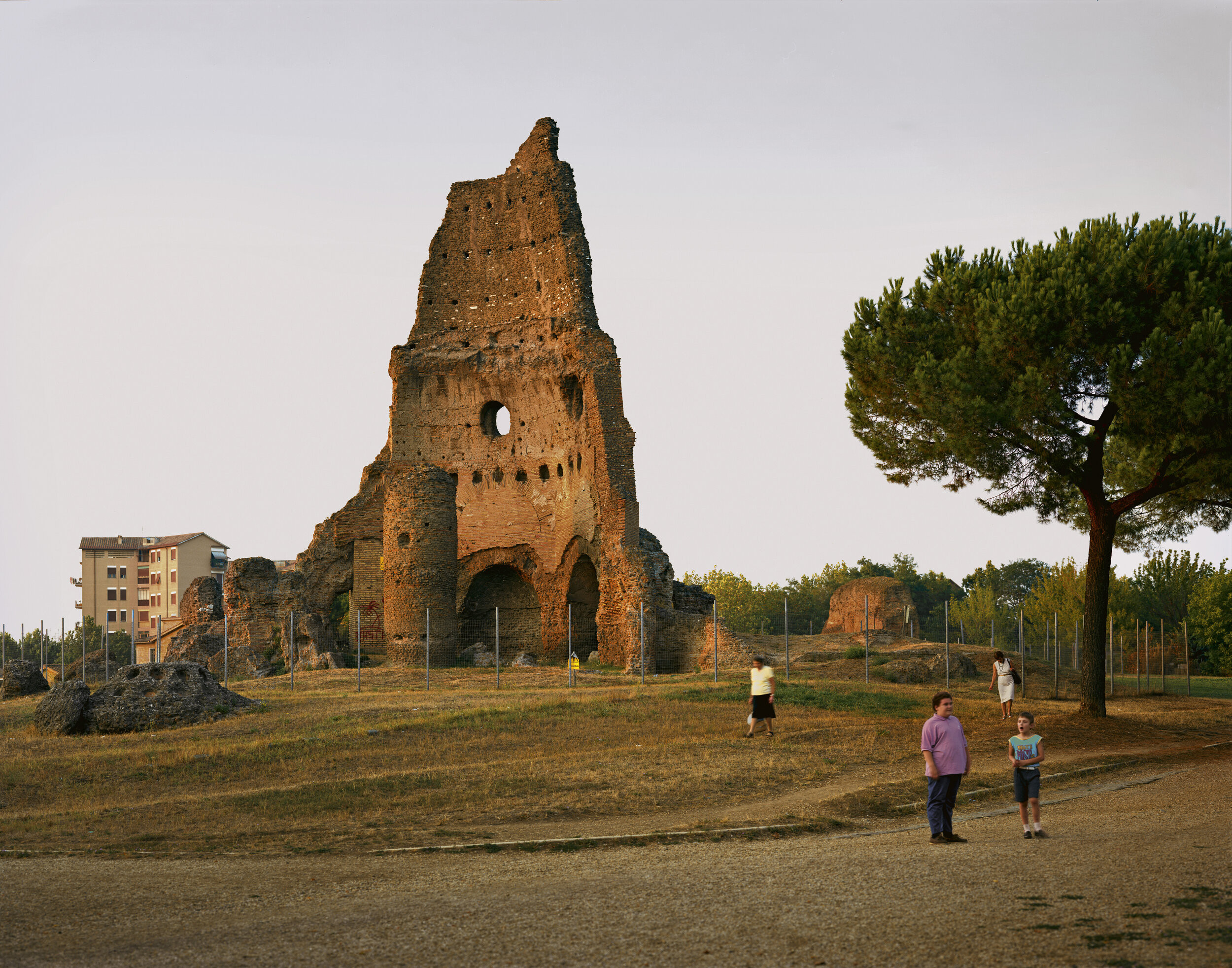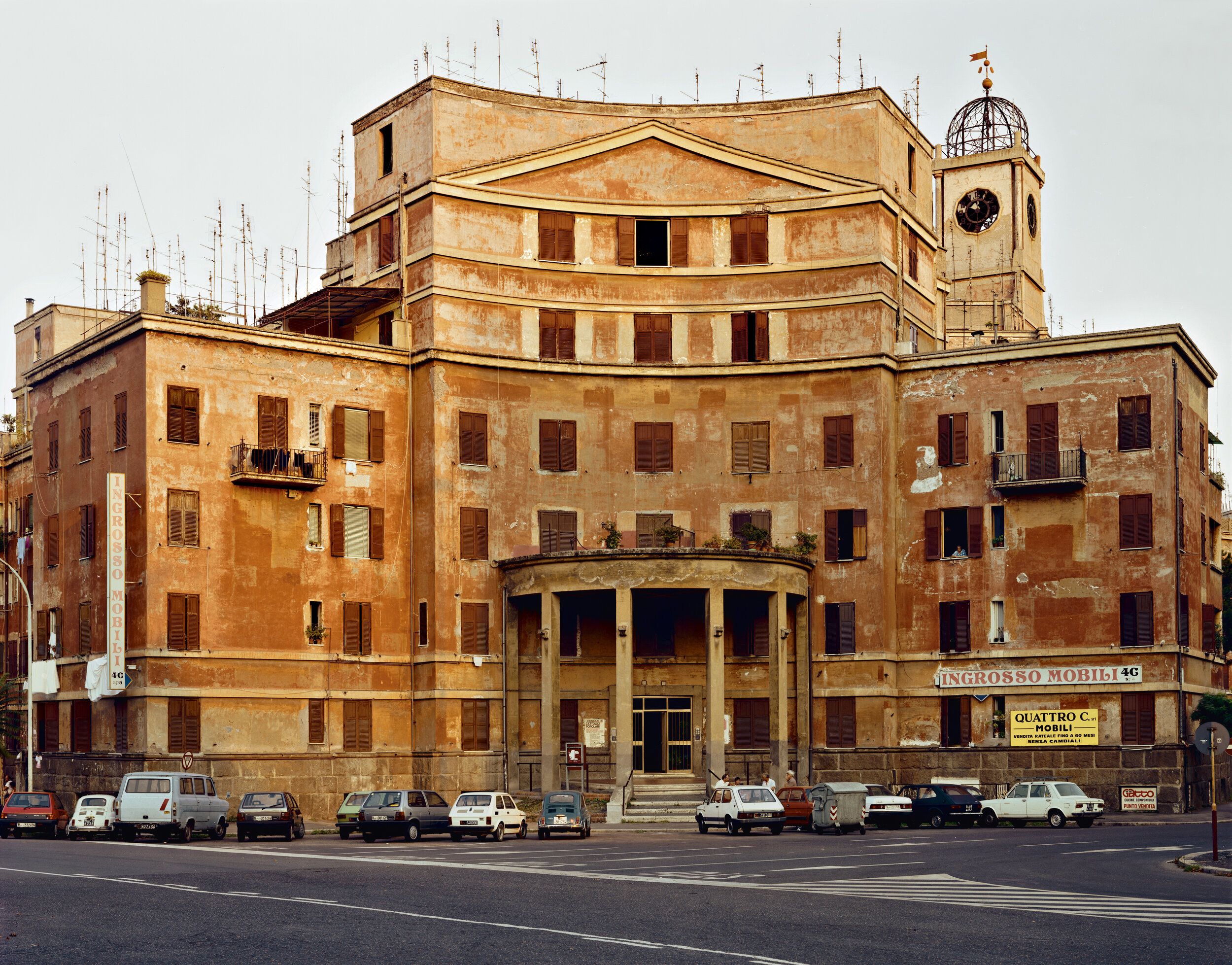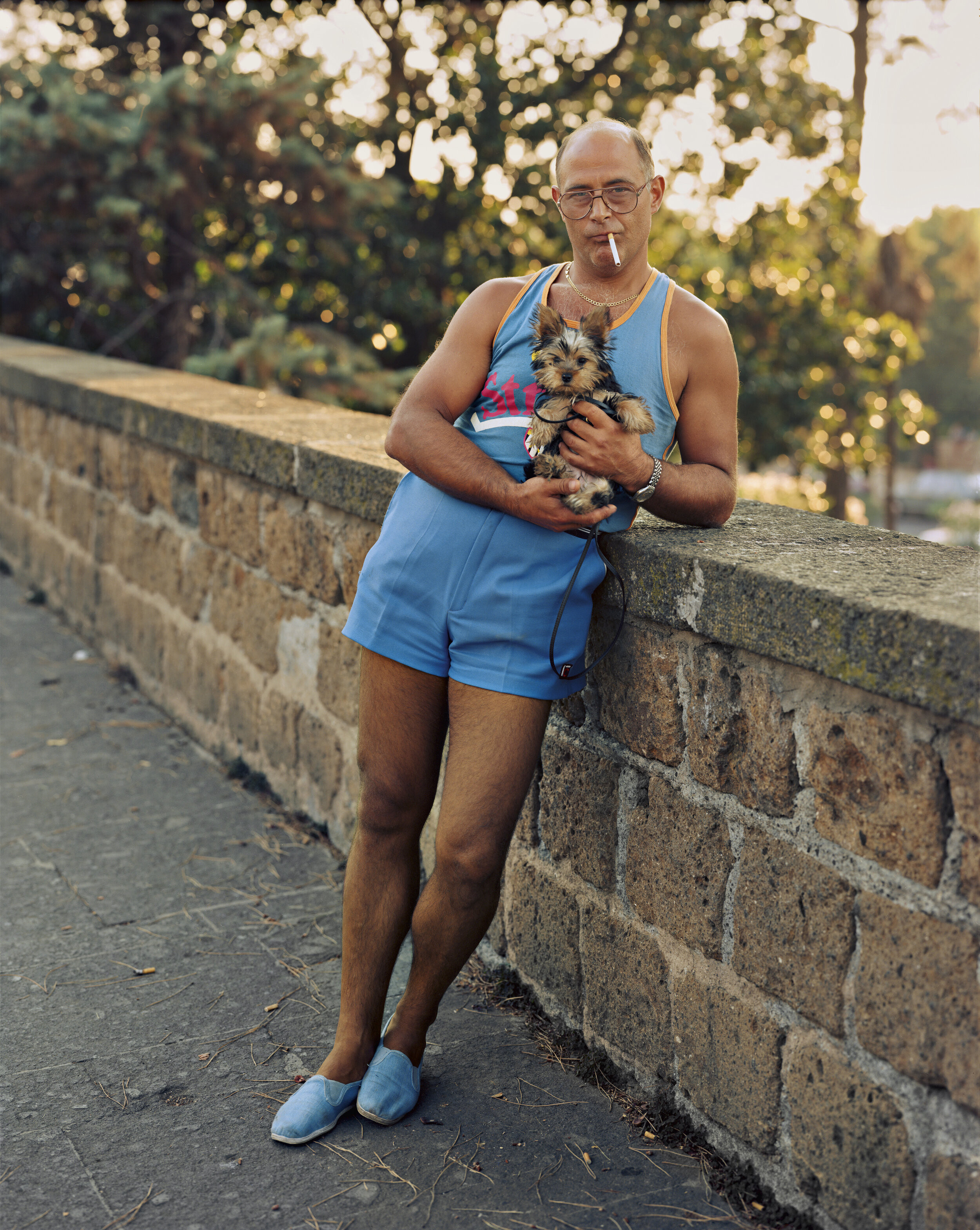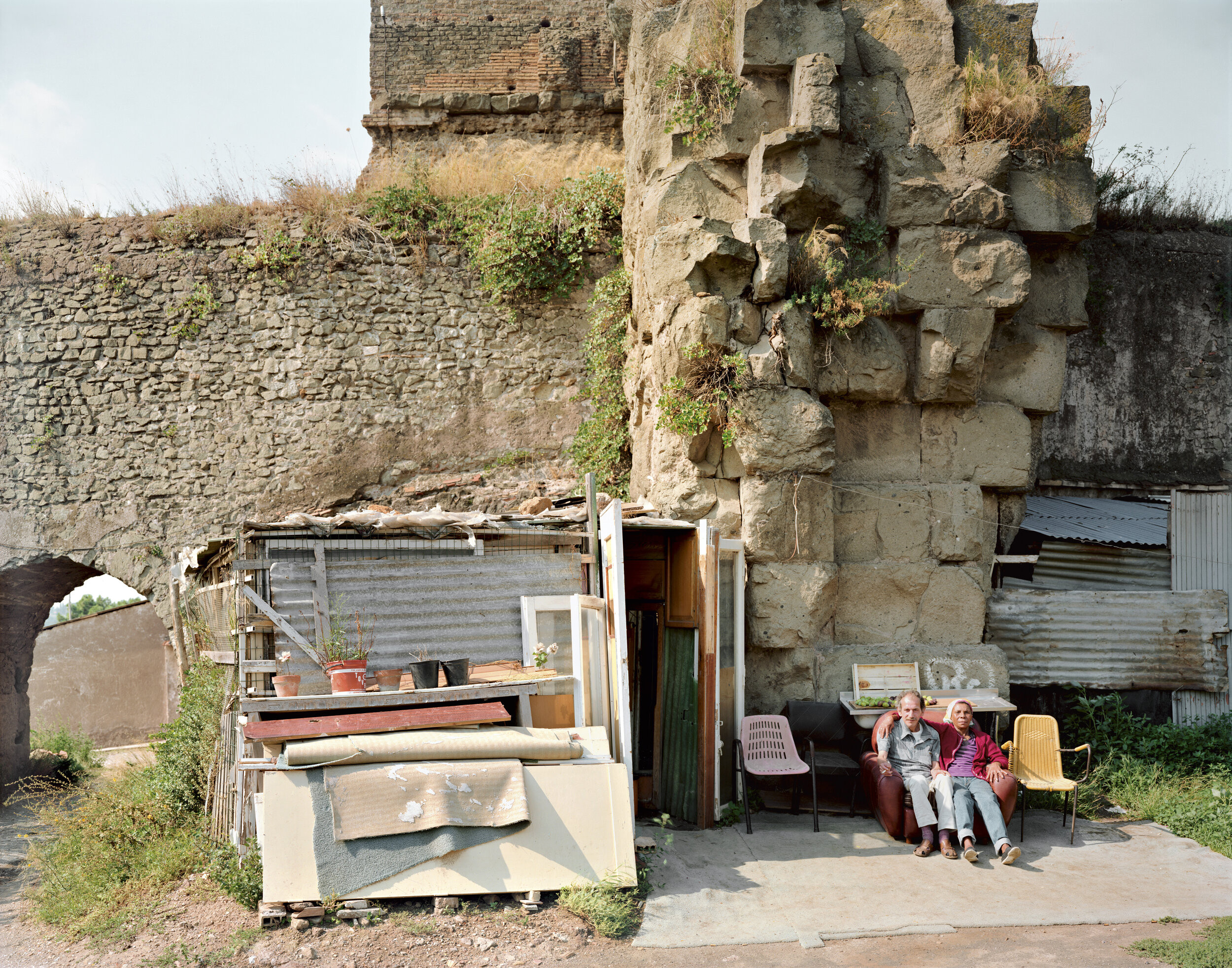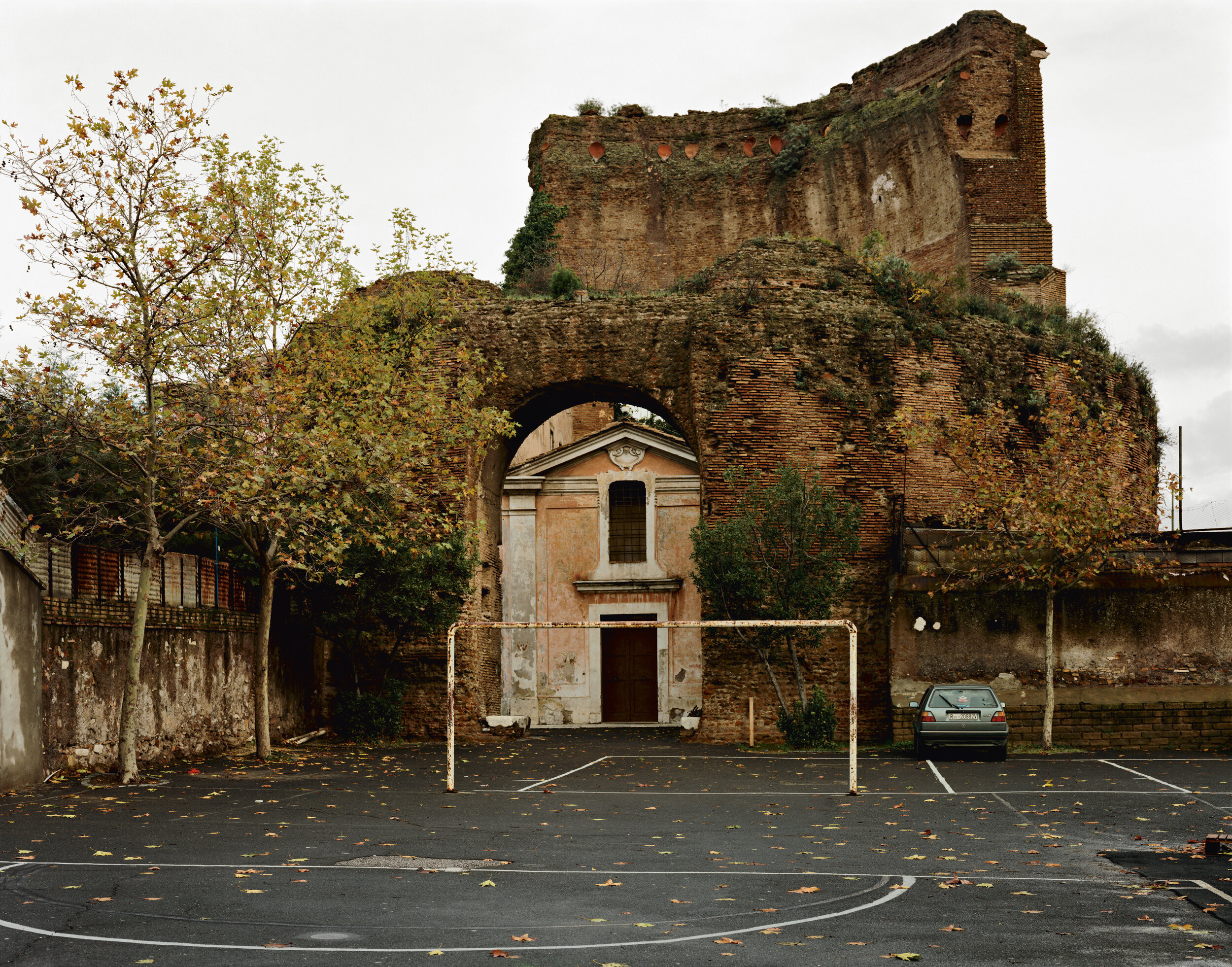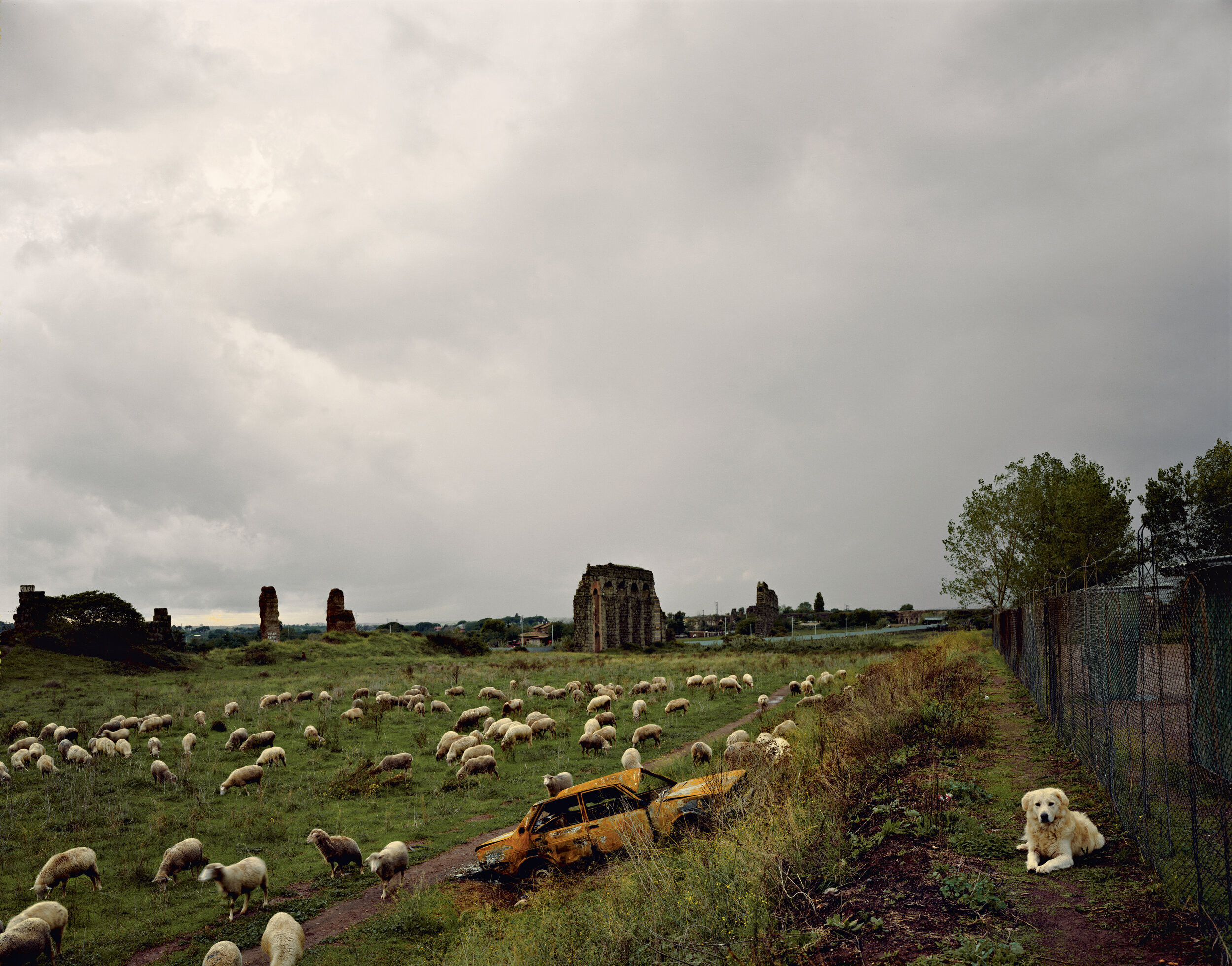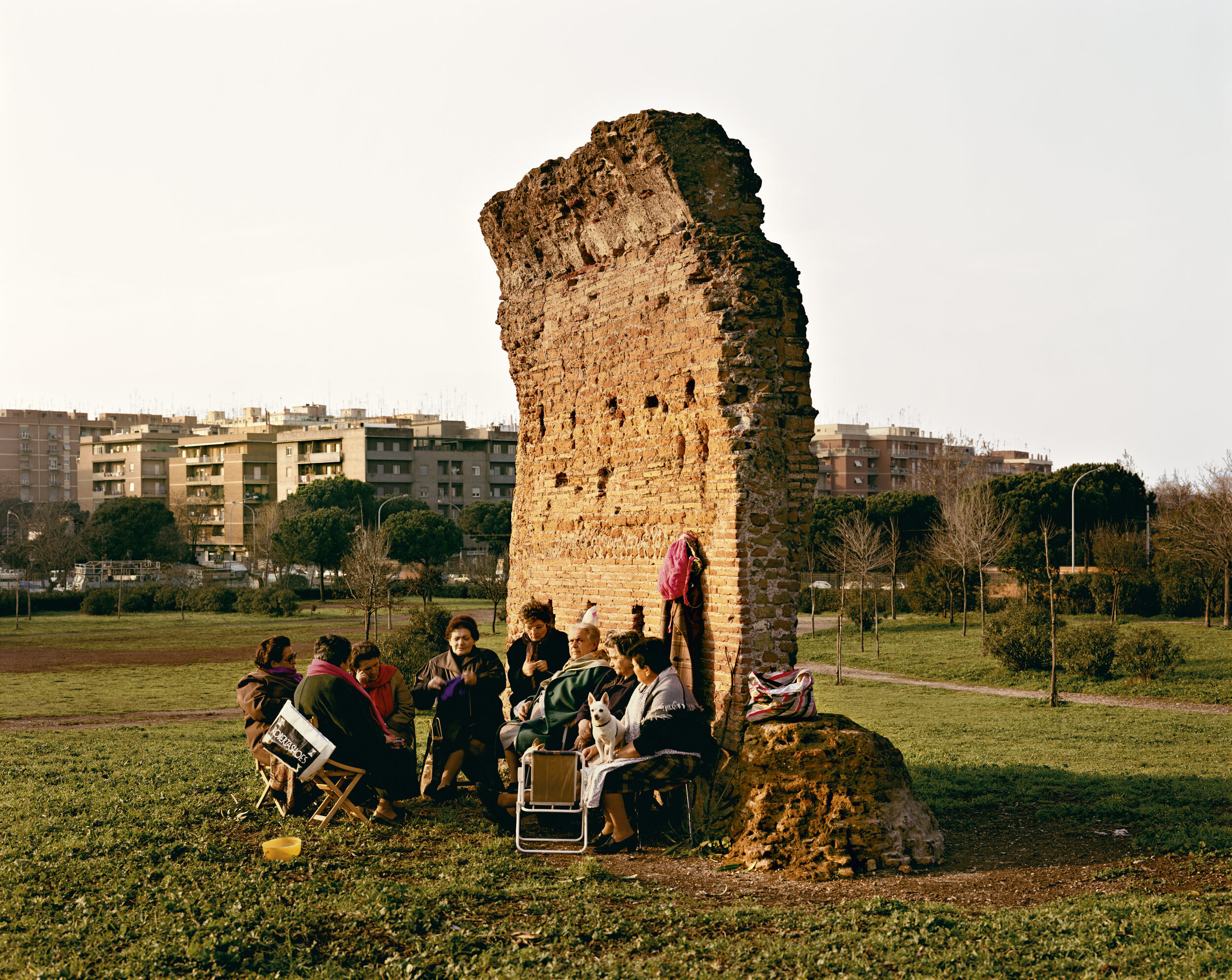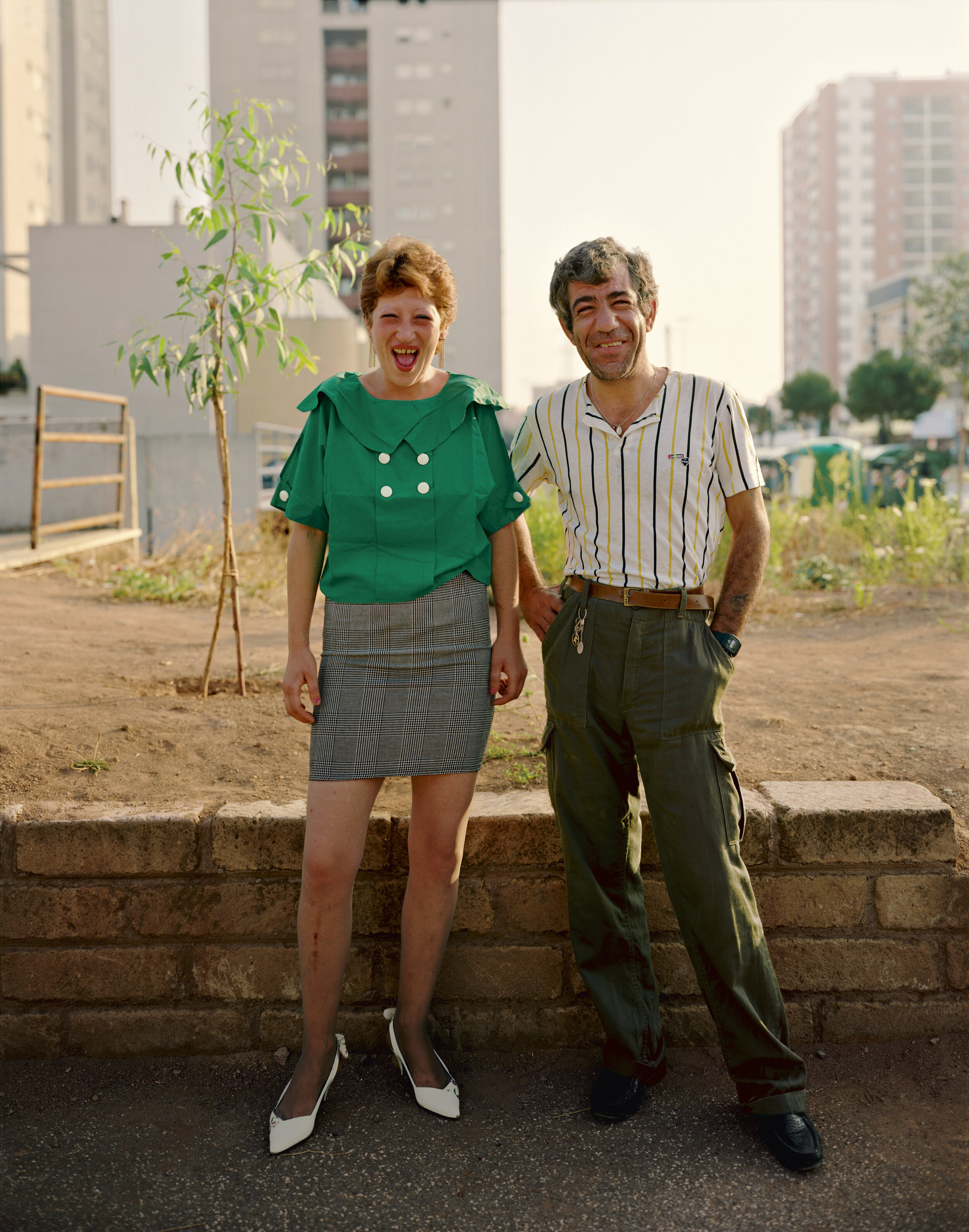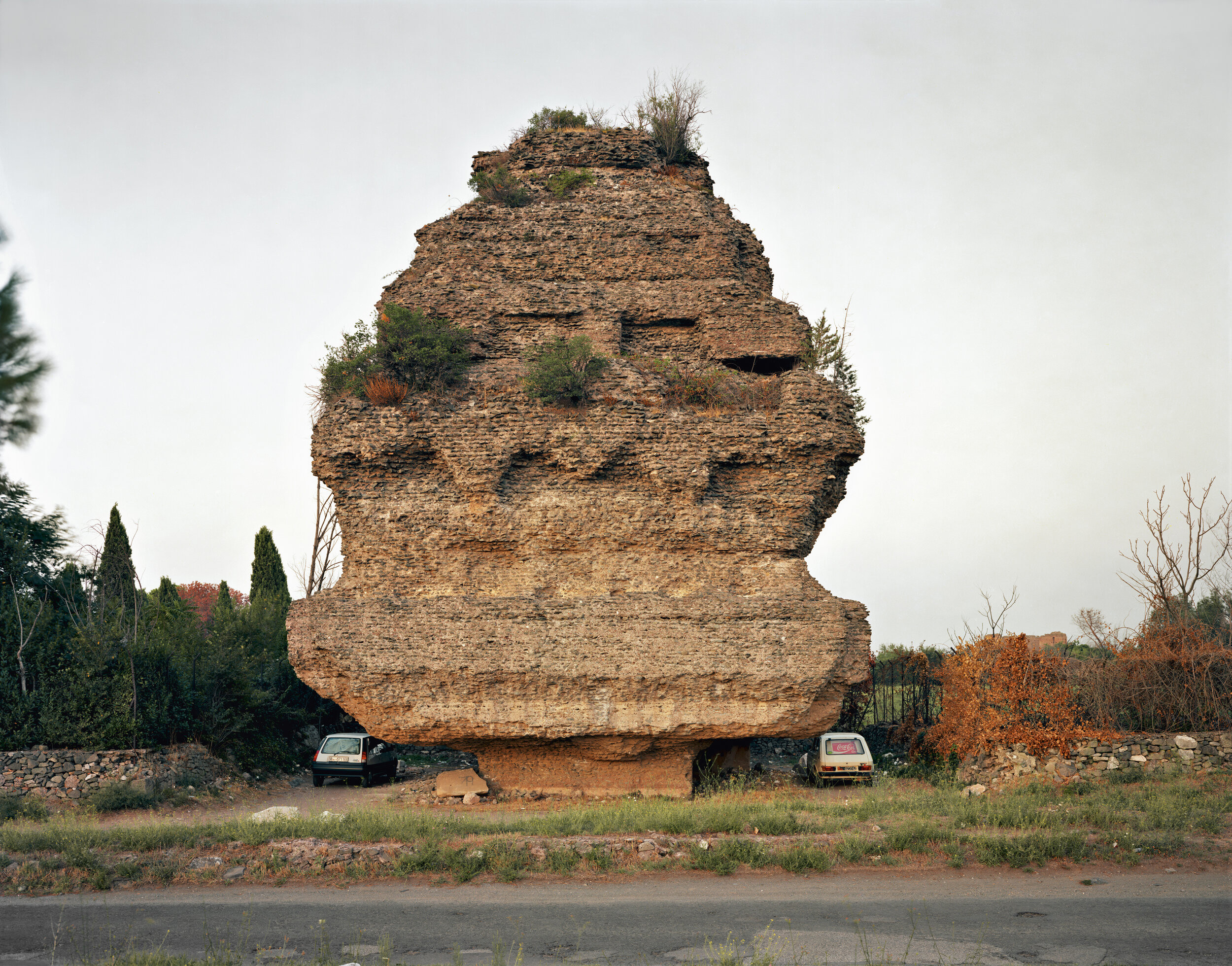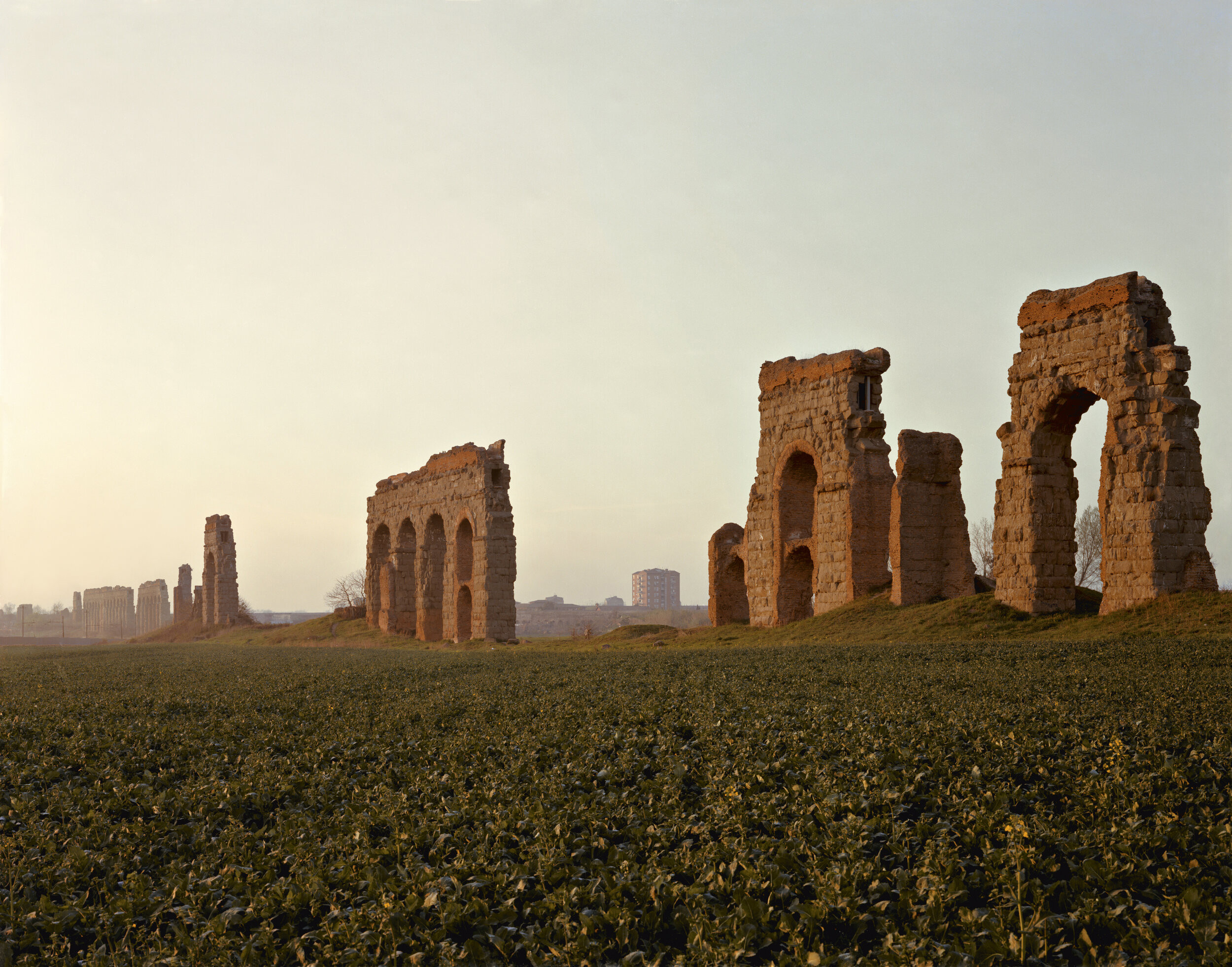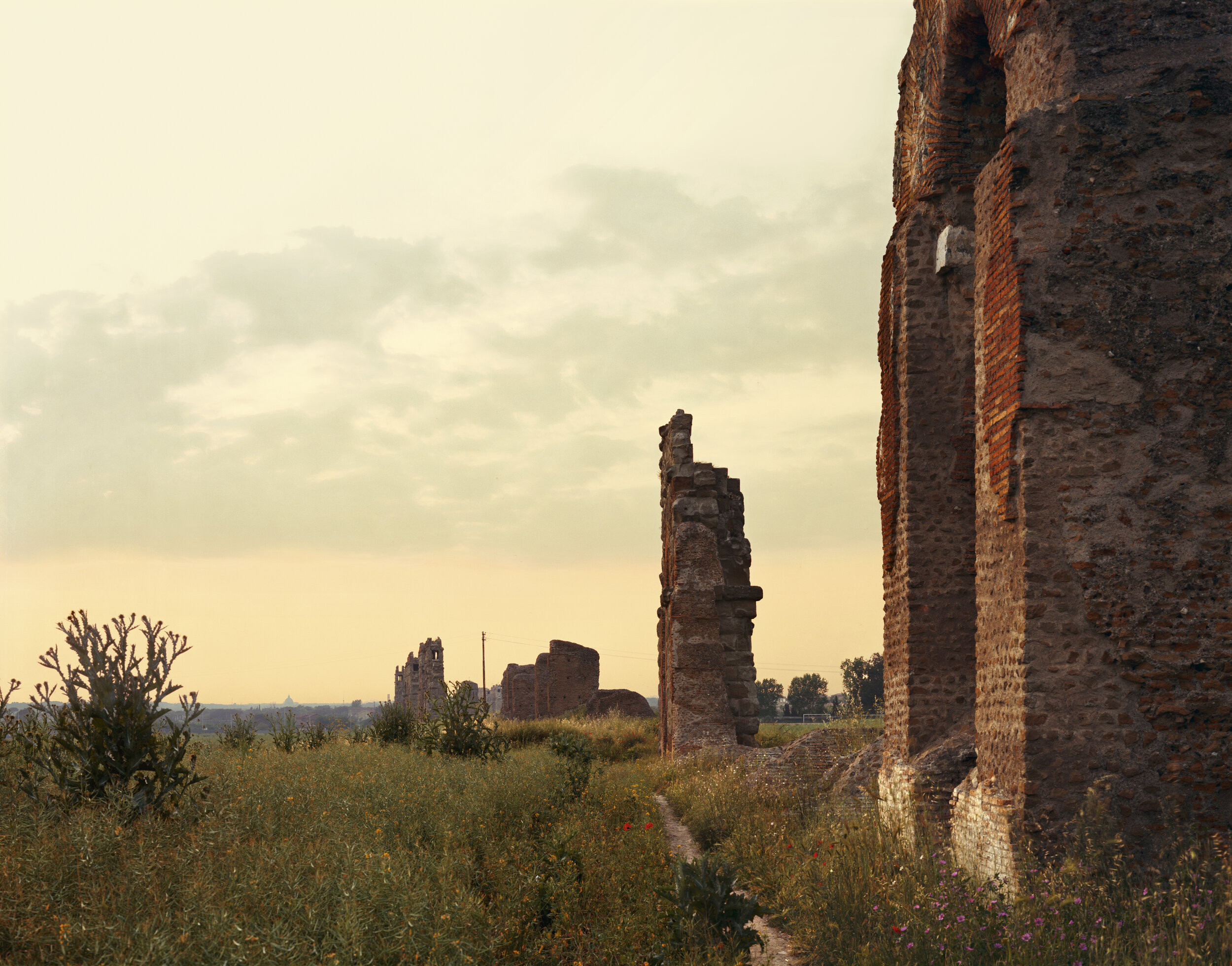Joel Sternfeld
Campagna Romana
1989–1990
The countryside south and east of Rome around the ruins of the Claudian Aqueduct is an artist’s paradise. Its rare light, its evocations of ancient Roman civilization enchant the camera just as they attracted such painters as Claude, Turner, and Corot. Writers, too, have fallen under its spell — from Horace and Pliny the Elder to Goethe and Henry James. “Few other scenes on earth combine in one glance such a myriad of mighty associations,” wrote one nineteenth-century chronicler. As for the great aqueduct, its “broken and disjointed arches” suggest “the vertebrae of some mighty monster.” The rolling plain of the Campagna was only marginally occupied during the height of the Roman Empire: one lived either within the protective walls of Rome or in the cooler and more defendable hill towns a few miles away. After the fall of Rome, the countryside grew even more desolate. Except for a few castles and towers built in the Middle Ages and an occasional farmhouse built in the nineteenth century, the area remained barely populated for 1,400 years, haunted by its past.
Then, in the late 1800s, after Italy became a nation and Rome its capital, the Campagna changed dramatically. Railroads began to weave in and out of the arches of aqueducts; suburbs began to intrude on the plain. Now the Campagna is increasingly threatened by rapid and uncontrolled urban sprawl. Sternfeld’s magnificent color photographs capture poignant juxtapositions of past and present: ancient tombs, villas, arches, temples coexisting with apartment houses, malls, and the blight of the modern city. Much of the area that Sternfeld documents has been proposed as a large archaeological park, but unless legislation is enacted immediately, what little remains of the historic Campagna will be lost forever.
